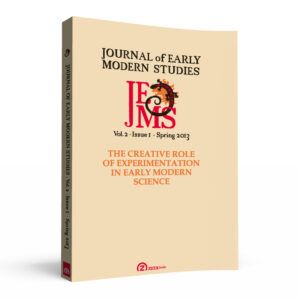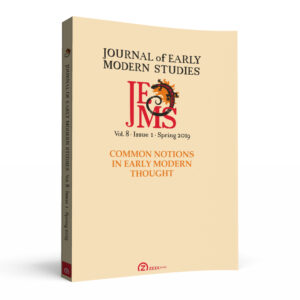Contents
Glen A. MAZIS: The Sky Starts at Our Feet: Anasazi Clues about Overcoming Mind/Body Dualism through the Unity of Earth/Sky
- ABSTRACT: Looking at the finding of several archeoastronomers, who examine the relationship of built cultures to celestial bodies, this essay speculates on the unique relationship of the inhabitants of Chaco Canyon in New Mexico to the earth and sky. The Anasazi who populated this region suddenly disappeared around 1000 A.D. and little is known about their culture, religion, and world except by studying the structures they left behind. This essay looks at their kivas, dwellings, the puzzling “Sun dagger” monument, and the petroglyphs throughout the canyon to understand the many ways that each structure through use of light and space marked the occurrence of a surprising number of celestial events. There is good evidence that the Anasazi dwelled within the sky and felt a continuity between earth and sky in a way to which postmodern cultures have little access. The unity of body and surround, especially as ascending into the sky from the earth, is linked to a spirituality at odds with the legacy of Plato and others, who oppose the celestial to the earthly, as an inferior realm.
Laura MENATTI: From Non-Place to Rhizome: A Geophilosophical Analysis of Contemporary Globalized Space
- ABSTRACT. Rosario Assunto, an Italian philosopher of aesthetics begins one of his most interesting and dense essays with a terrifying image about the Earth where we live—“calvizie della terra dissacrata” (1983, 15)—meaning that the Earth becomes bald because of the actions of the man and loses every characteristics of beauty and sacredness. According to Assunto’s theory the homo oeconomicus is the author and the promoter of a Promethean, titanic, industrial and malodorous town where the sense of art, beauty and the harmony in landscape are forgotten and erased. The Modern homo oeconomicus is satisfied in his thoughts and works with such a desecrated and raped Earth, rather, he desires this kind of landscape as a symbol of his own progress. I remember that when I first red this essays I asked to myself what kind of philosophy I could propose in such a horizon and what kind of analysis I could develop. Maybe geophilosophy could now give some answers. Geophilosophy, according to the version I will propose, deconstructs the usual and reductionist grammar about the concept of space and place, suggesting a new expressive, perceptive and, finally, ethic possibility for the relation between human beings and places. In this paper I provide my interpretation of geophilosophy, inspired by Gilles Deleuze’s words, the first philosopher of XX century who wrote about this concept. Then I will analyze non-places according to the famous definition proposed by the Marc Augé and I will go beyond the French anthropologist’s definition suggesting a new interpretative model for places and non-places by linking my idea of geophilosophy to Deleuze’s concept of rhizome. The aim of this article is to demonstrate the complexity of the concept of place and finally put into evidence that places, which constitute our roots, are all the spaces we have around, even non-places. Post-modern era mainly produces non-places: geophilosophy has to explain the philosophical and cultural reasons for this production by pointing out which possible modalities of connection we can find between contemporary human beings and places.
Jeffrey S. DEBIES-CARL: Mapping the Residual Landscape: Dilapidation, Abandonment, and Ruin in the Built Environment
- ABSTRACT: This article examines the extent to which spaces are structuring influences on, or targets of, action. Two factors and their interactions are presented: the extent to which a space is 1) maintained and 2) used. As these factors increase in strength, the structural influences of a space increase while agential opportunities are diminished. Conversely, as spaces become dilapidated and abandoned, structural forces are weakened and the potential for creative action heightens. These spaces can be conceptualized as elements of the ‘residual landscape’: spaces left behind by socio-historical processes and practices. Special cases are considered where the factors are inversely related and issues of structure and agency are complicated. A brief case study serves to illustrate each type of space and the factors which operate therein.
Luis O. ARATA: Modeling Festive Space
- Abstract: This article explores what enables a space to become festive. We start by reviewing how the festive has been deeply connected with play, to the point of being considered a type of play, or more generally, a type of interaction. What enables the festive is the ability to interact with the substance on which participants feast. The question we will then explore in more detail is: given a subject matter from which to build a festive occasion or space, how do we go about making it happen? How do we model the festive space? It is impossible to show that there is only one way of going about enacting the festive. For this reason, it is more productive to propose a model of how to achieve such task. The model that emerges in this article proposes that dismembering the festive substance, in a participatory way, facilitates its enactment. We then examine two cases of festive enactment in different mediums: the textual feast of Julio Cortázar’s novel Hopscotch that turns the printed page into a festive space, and the making of festive theatre, including the creation of the festive play Fire ’Scapes.
Claudia BOSCH : “Ein Prosit der Gemütlichkeit”. The German Beer Hall as Place of Cultural Performance
- ABSTRACT: Festzelte are the beer halls (actually tents) of German Oktoberfest style celebrations—generally called Volksfest. Being transient buildings, the tents can be massive and intimidating. 5,000 or more visitors may find a place to drink, eat, sing, dance and celebrate wildly. Chants proclaim the “Gemütlichkeit” [coziness/snugness] despite an atmosphere supercharged with wild behaviors and heavy drunkenness. Norm breaking, liminal behavior is not only tolerated but even expected and intended (up to a certain point). Victor Turner’s concept of cultural performance helps explain the revelry in a beer tent. The tents with their specific rural and folkloristic decorations, spatial structure, and furnishings facilitate the joyous actions. Their staging, as well as the celebratory actions themselves, provide a sacred play-space for anti-structure and communitas, flow and performative reflexivity. The active celebratory participation creates a place where alterity reigns and enables a sense of belonging.
Evert VANDEWEGHE: Staging Urban History: Festivities and the Creation of Historical Townscapes in Belgium (1860-1958)
- ABSTRACT: Parades were an intrinsic part of urban life in Belgium between the middle of the nineteenth and twentieth centuries. Scholars have used these festivities time and again to probe into nationalism and the growing political tensions of the time. However, much less attention has been paid to the relation between these parades and the townscape itself. This paper tries to fill this gap by exploring how urban festivities can reveal the differing ways in which small-town populations coped with the dilemma of modernization versus preservation (or even creation) of a historical townscape. To this end the routes of the parades are examined, as well as the selective illumination of certain buildings and town quarters, the floats and temporary constructions used during these festivities.
Xenia SREBRIANSKI-HARWELL: Celebrating the Russian Past: Émigré Festivities in 1950s/1960s New York
- ABSTRACT: This article examines specific celebration rituals of two groups of Russian émigrés during the period of the mid-1950s to early 1960s. The groups, comprised of former officers of the Russian imperial army and of graduates of schools for noble girls, often situated their festivities within a Russian Orthodox Church building located at Madison Avenue and 121st Street in Manhattan. The celebrations, spatially enclosed and separated from the outside world within this structure, suggest their privileged and exclusive nature. The staging and performance of the celebration, while acknowledging displacement and exile, re-inscribed the spatial enclosure with the Russian past through the re-enactment of Russian cultural traditions and social hierarchies, thereby validating the lives and identities of the celebrants.
BOOK REVIEW
Mark Cioc. The Rhine: An Eco-biography, 1815-2000; David Blackbourn. The Conquest of Nature. Water, Landscape, and the Making of Modern Germany (Troy R. E. PADDOCK)






